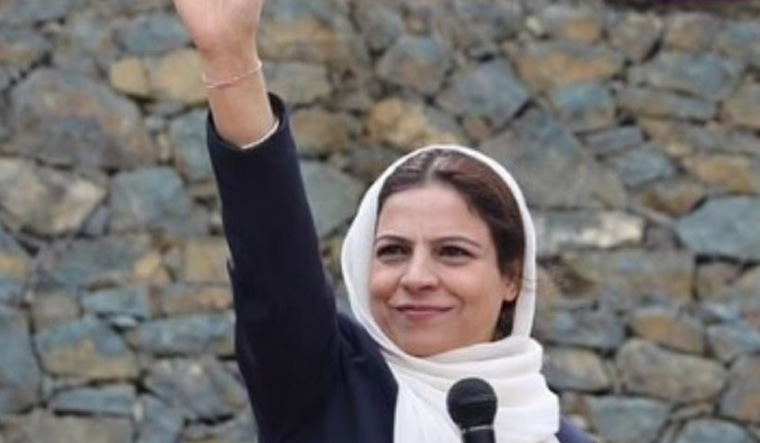Safina Baig, chairperson of District Development Council in Baramulla, wears many hats. She is Kashmir's Haj committee chairperson, president of the women’s wing of Jammu and Kashmir People’s Conference, former women’s wing chief of Jammu and Kashmir People’s Democratic Party (PDP), and an advocate by profession. She was elected as a member of DDC Wagoora Constituency which she won with a huge margin, and eventually rose through the ranks to become the chairperson DDC, Baramulla.
At a time when the political landscape of J&K is changing from warring politicians to building a three-tier democratic setup for redistribution of power and elevating democracy at the grass root level, Safina says the concept of inclusive governance has been alien to the state which has seen centralisation at various levels. While the present task of building local leadership isn’t easy, it holds the key to the future of J&K, she says.
“The augmentation of the three-tier democracy setup in Jammu and Kashmir post the abrogation of Article 370 underscored the renewed commitment to inclusive governance. The establishment of the Panchayati Raj Institutions (PRIs) not only ensured that local leadership became an integral part of decision-making, but also created a platform for citizens to voice their concerns, participate actively, and influence policy formulation,’’ she says.
“This transformation in governance structure enabled a more direct representation of the people's aspirations, bridging the gap between citizens and their elected representatives. Central to the three-tier democratic setup is decentralisation of power. This distribution of authority among the grassroots institutions has facilitated a more equitable sharing of resources and opportunities. It has minimised bureaucratic bottlenecks and streamlined the delivery of services, which often used to get hampered by the top-down approach.’’
She says one of the most notable benefits is the heightened level of accountability and transparency. “With local representatives now entrusted with the responsibility of governance, the citizens can get a closer view of the decision-making processes. It boosts public trust and promotes greater civic participation.”
The next step is delivery which means giving people health facilities, educational infrastructure, access to clean water, and reliable electricity. For the PRI to succeed and deliver results, there has to be synergy between local leadership and the bureaucracy. “Effective coordination from the bureaucratic ranks is necessary to ensure that the grassroots initiatives get seamlessly integrated into the broader developmental framework,’’ says Safina.
“The bureaucracy's sincere efforts in providing technical expertise, guidance, reach-out, and oversight is a must and should ensure that the implementation of projects adhere to the highest standards.”
The real test of democracy will be in making the three-tier Panchayati Raj system a success, and not the mere holding of elections. A successful collaboration between elected representatives and the bureaucratic machinery will play a vital role in transforming policy aspirations into practical, on-ground results.
Building local leadership is key to future of J&K: Safina Baig
'Central to the three-tier democratic setup is decentralisation of powers'

TAGS
📣 The Week is now on Telegram. Click here to join our channel (@TheWeekmagazine) and stay updated with the latest headlines
Read more
-

South Korea plane crash: Police raid Jeju Air’s office, Muan International Airport as probe intensifies
-

'Then he would have agreed': Rodri responds to Cristiano Ronaldo's Ballon d’Or criticism
-

Mohanlal to collaborate with Ajay Devgn for ‘Drishyam 3’? Here’s what the actor has to say
-

Improved outlook for IT services companies in 2025 as macro uncertainties expected to ease
-

India’s SpaDeX mission: Mastering the precision of autonomous space docking
Editor's Pick
*Articles appearing as INFOCUS/THE WEEK FOCUS are marketing initiatives

